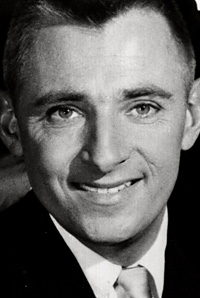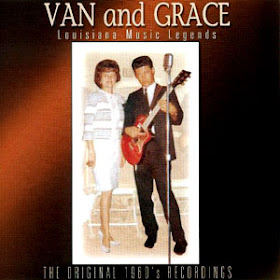Gene Puerling (March 31, 1929 – March 25, 2008) was a vocal performer and vocal arranger who created and led the vocal groups The Hi-Lo's and The Singers Unlimited.
There certainly is no more influential and revered a cappella arranger than the brilliant Gene Puerling. From his auspicious beginnings as a founding member of the vocal jazz group the Hi-Lo's, with whom he recorded thirteen albums between the years of 1953-1964, Gene revealed the talent and promise that would later be fully realized with his work as director, arranger and performer with the Singers UnLimited.
Eugene Thomas Puerling was born in Milwaukee, Wisconsin in 1929. Though his family was musically inclined (various members of the family played violin, piano and clarinet) Gene himself had no formal musical training! He was a working professional musician from the age of seventeen, and simply did not have the time to devote to a formal musical education.
The Hi-Lo's, who recorded their first record in 1953 when Gene was 24, garnered accolades for popular renditions of classic jazz tunes such as "Fascinatin' Rhythm" and "Skylark." Gene was developing the trademark style with which he would become so uniquely identified. Subsequent to the demise of the Hi-Lo's, Gene was working in the busy recording studios of Chicago's commercial and jingle industry, where he met studio vocalists Len Dresslar and Bonnie Herman. Len and Bonnie, along with fellow ex-Hi-Lo Don Shelton, joined together under the moniker of "Singer's Unlimited" in 1967.
The group's purpose was to garner lucrative commerical work, and to that end they produced a demo including the Beatles song, "Fool On the Hill." This demo ultimately came to the attention of German producer Hans Georg Brunner-Schwer, via pianist Oscar Peterson. Schwer had founded MPS Records, and had, in his studio in Villengen, Germany, the only sixteen track recording console in Germany at the time. Schwer was immediately taken with the Singers Unlimited and proposed that they come to Germany to record.
The results of that recording, which took place in 1971, were released as the album "In Tune." The group went on to record fourteen albums, the last of which was "Easy To Love." The group's extensive studio experience was vital, as Gene's arrangements would employ all of their range and skill, and utilized the burgeoning studio techniques of overdubbing and mixing to create their inimitable sound. Given the complexity of the arrangements, the The Singers Unlimited did not perform live, feeling that the studio was their ideal medium of expression.
Puerling's vocal arrangements and chord structures were classic and instantly recognizable. In addition to the Hi-Lo's and The Singers Unlimited he contributed to Rosemary Clooney's TV show and mentored many other singers and groups, including Take 6, The King's Singers, The Manhattan Transfer, First Call, Chanticleer, Glad (band), The Free Design, and Brian Wilson. His vocal arranging ability and his ability to arrange musical backing by Frank Comstock's band and several others was widely regarded; John Neal of Harmony Sweepstakes said after his death: "As a craftsman of the art of blending and harmonizing the human voice in song, Gene has no equal."
He was awarded a Grammy Award for Best Vocal Arrangement for Two or More Voices in 1982 for his arrangement of "A Nightingale Sang in Berkeley Square" (as performed by The Manhattan Transfer). A Latin song he arranged for Singers Unlimited, "One More Time, Chuck Corea," inspired by Chuck Mangione and Chick Corea, has been adapted and used by marching bands, drum and bugle corps and jazz ensembles.
In the late 1970s, Puerling reunited the Hi-Lo's, with whom he recorded a couple of CDs and performed at the Monterey Jazz Festival and elsewhere around the country calling it quits in 1994 but making sporadic reunion appearances for many years after. In recent years, Puerling taught workshops at the Marin-based Harmony Sweepstakes. He died March 25, 2008, in the Marin County Hospital, California, due to complications from diabetes just days shy of his 79th birthday.
(Edited
from Wikipedia, Singers.com & SF Gate)
Here’s a clip of The Hi-Lo's singing A Gal in Calico on the Rosemary Clooney Show.


























.jpg)




























